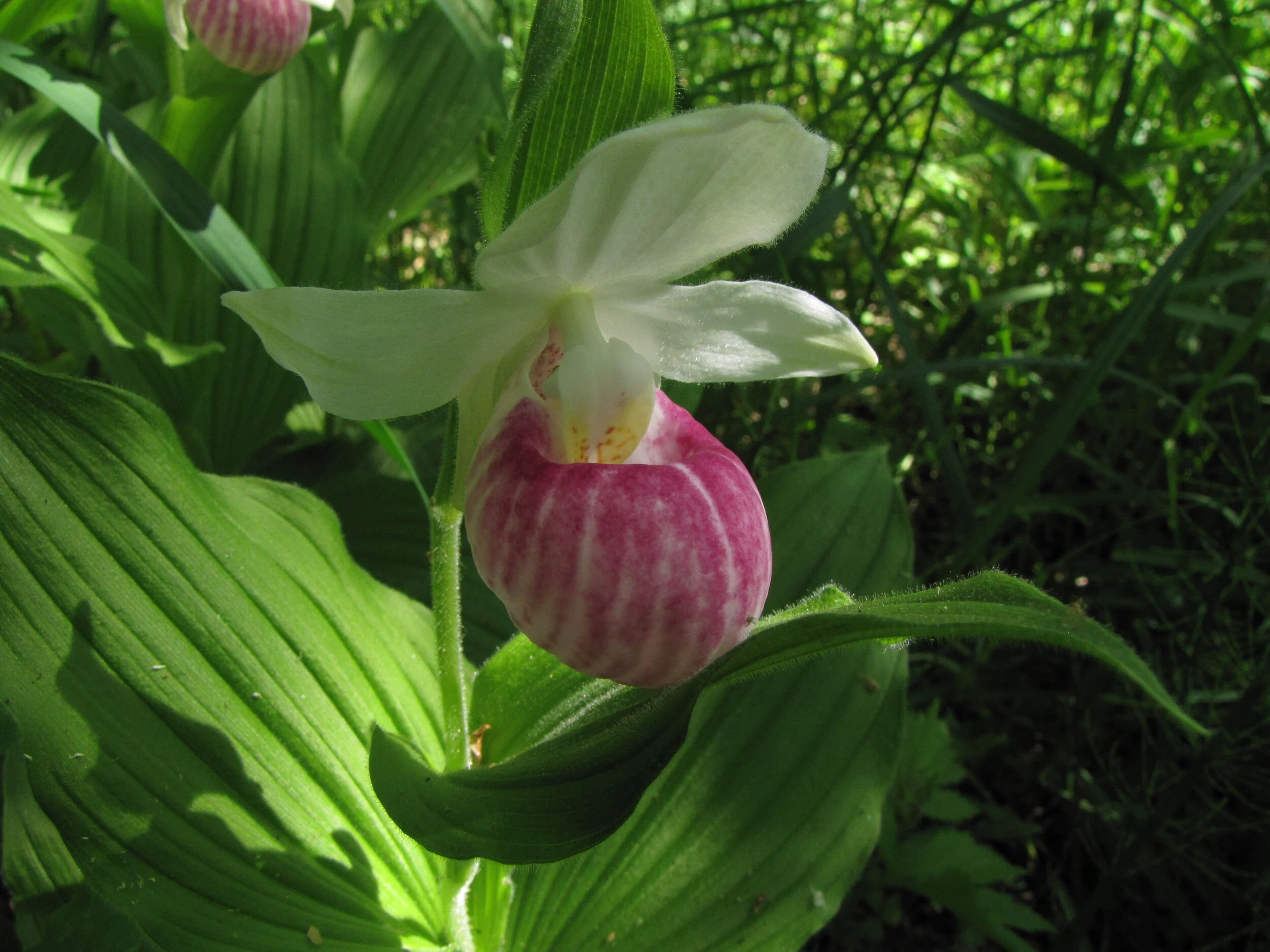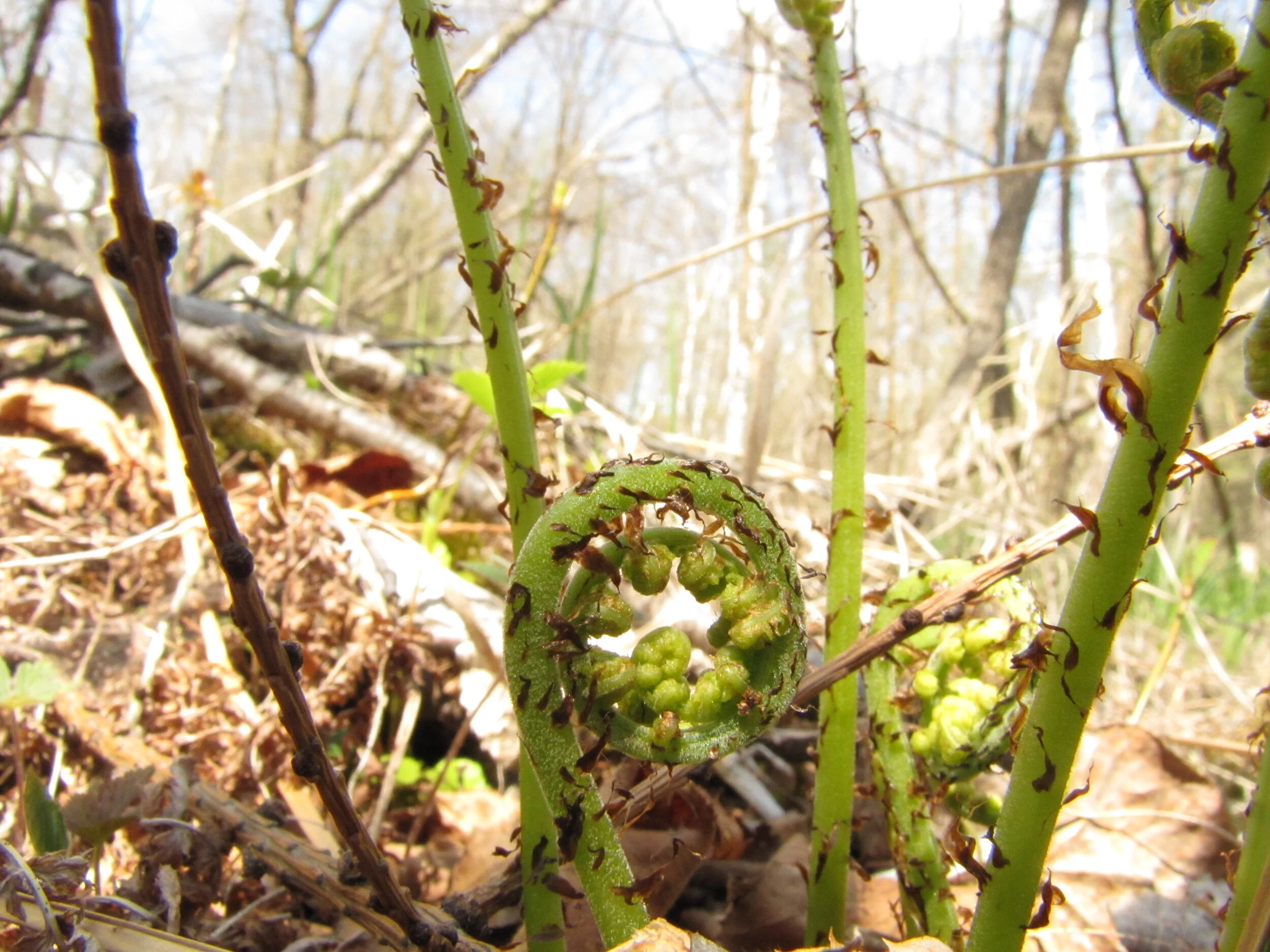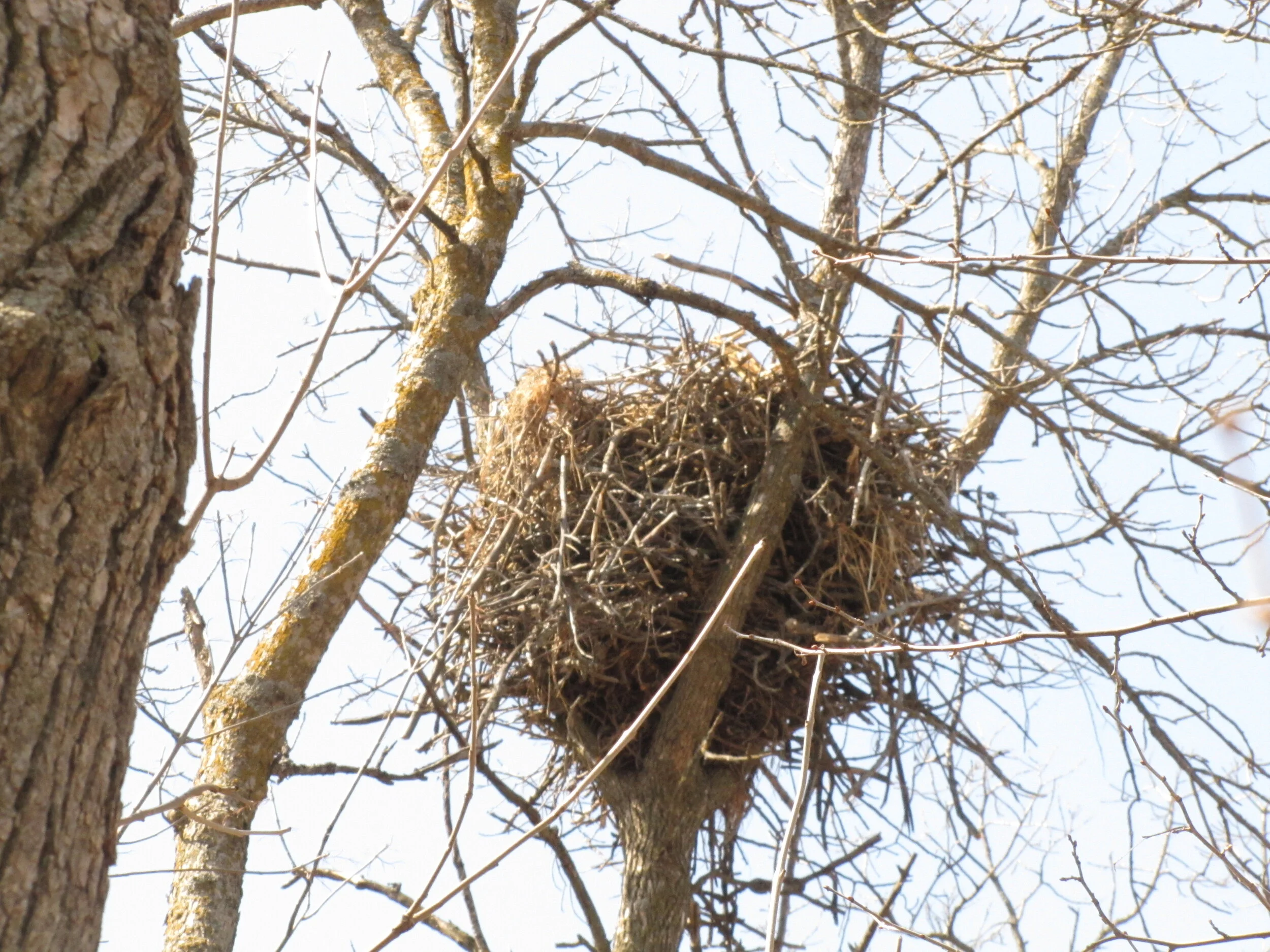Spring has passed. All the spring ephemerals have faded, replaced by knee high greens. There seems to be a pause in the blooms, with the geraniums loosing petals in the winds, and others not yet ready to show their finery. The exception to this are the orchids. The Showy Orchis have disappeared, but the Showy Ladyslippers are just beginning. Down in the sunny bog areas they are beginning to bloom, while in the shadier spots nothing by the rising foliage is visible. In the next two weeks there will be some blooming along the road by the wood shed. Easily viewed by anyone who cares to look, these are a joy each summer.
Deeper in the wet places the Northern Bog Orchids are blooming. Either it is a good year for them, or I am getting better at spotting them! I am adding to my list of things I want to do in the woods the spotting of as many orchids as I can. It is a tedious process. They are tiny compared to the more visible plants. They like wet feet, so my feet get wet searching for them. So small that I could easily step on them without noticing, I must move slowly. Eyes peeled. Eyes blurring with the strain of picking out green on green. Just when I am about to give up, one will suddenly appear. Well, sometimes. More often I give up and don't find any.
I then choose an easier path. Lined with what are now old friends, plants whose names I know. Wild sasparilla, Tick trefoil, the early greens of goldenrod and aster. A touch of color catches my eye. There, on the forest floor, a tiny woodland strawberry!
There is much to see out there, and I hope you are taking moments to stop and really look.
Showy Ladyslipper















